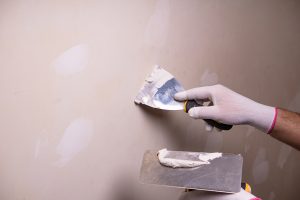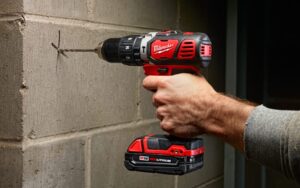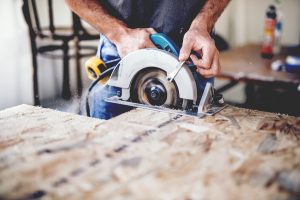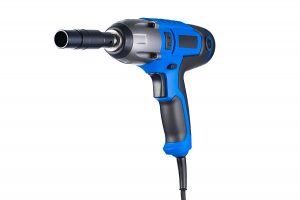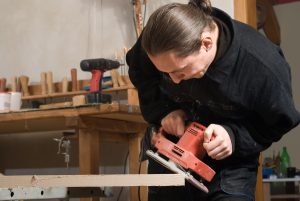One of the most important aspects of getting any home repair completed correctly is using the right product for the job. This can be more difficult than it sounds when you have two or more products that are seemingly quite similar in terms of materials and function, but also have important differences. This is certainly true with spackle and joint compound. They are common products used in construction, renovation, and restoration.
Both materials have strong similarities in their appearance and overlap in how they are used. But there are important differences as well which will dictate which one is right for the job you need to complete. If you are about to make a home repair or installation into a wall, then you should understand the differences between spackle and joint compound.
Table of Contents
What is Joint Compound?
Sometimes called drywall mud, joint compound is made from gypsum dust that needs to be mixed before it can be used. Although you may be able to find some joint compound that is pre-mixed. When in its mixed state, it has the consistency of cake frosting.
You can find some joint compound formulas that are lightweight. Which means that they are designed to be easily applied to seams in drywall. Plus, there are versions called setting compound which are perfect for small patching jobs that speeds up the drying time.
Joint compound is most often used when new drywall is placed. During the installation process, there are usually seams between the drywall sheets that are filled with the joint compound. When applied, the joint compound will create a smooth surface that once dried can be sanded and painted. It does have a slower drying time compared to spackle, but that tends to work better for hanging drywall as additional sheets can be placed while the compound is drying which speeds up the work.
What is Spackle?
Made mostly from gypsum powder combined with binders, spackle has the appearance and texture of thick toothpaste. Spackle is usually sold pre-made and is designed to fill in the dings and dents found in walls due to impacts. This substance is also well-suited to fill in holes made by nails as well.
Spackle has a lightweight formula that is mixed with a binding agent made from vinyl. Because of the elastic found in such formulas, they shrink even less and are perfect to fill small holes that are up to 3/4” in diameter.
Once applied, spackle tends to dry in about a half-hour and compared to joint compound does not shrink as much during the drying process. Once it does dry, you can sand and paint over the flaw that the spackle is now covering.
It should be noted that both joint compound and spackle will start to dry out once exposed to the air. This means that you need to cover them both to prevent the moisture inside from evaporating. Plus, if you are making joint compound, mix what you need so that you are not wasting any on excess.
How to Repair Small Holes with Both Joint Compound and Spackle
If you need to repair small dings, dents, or small holes, then the process for repair is similar with both joint compound and spackle.
- Clean the area that needs to be repaired
- Apply product using a putty knife
- Keep the knife at a 45-degree angle and apply the product in downward motions
- Use the knife to remove any excess
- Allow it to dry before either applying another coat or sanding to prep it for painting
Here’s a complete guide on how to spackle holes in drywall.
Differences Between the Two
There are many similarities, but also some differences that are present for both products. Understanding the differences can help you make the best-informed decision about which one to use.
Drying Time
It is true that both materials are made from gypsum, but arguably the biggest difference is the drying time. The slower drying time of joint compound does have some advantages when working over large areas such as hanging drywall.
Shrinkage
Another difference is that spackle tends to shrink less compared to joint compound which means that it generally works better when making repairs. With joint compound, you often have to apply multiple coats to cover the shrinkage.
Large Holes
When faced with larger holes or cracks in the drywall, joint compound combined with a reinforcing mesh is arguably better compared to spackle. The mesh is usually made from aluminum which provides the joint compound something to cover and attach properly. The result being a smooth surface which can be repainted.
In such cases, you should clean the surface, apply the mesh so that it covers the hole or crack, and then apply the compound and let dry. And another coat of joint compound if the first coat shrinks too much. Then let dry and sand. If the hole is quite large, then you may need to use a large piece of drywall instead. Cut out the damaged area on the drywall, replace it with a new piece of drywall, add some joint compound to seal the seams, and let dry.
If you have some joint compound left over from a previous installation or renovation, then it can be used in place of spackle for repairs. It’s not as good as spackle since it tends to shrink more which means additional coats. Plus, it takes longer to dry, but these are generally minor issues when you already have joint compound present.
A local drywaller will tell you spackle does not replace joint compound, at least in terms of its primary job. This is because spackle tends to dry too fast when performing installations. Joint compound is far better when working with large drywall sheets that need extensive coverage.
Overall, the differences between spackle and joint compound are actually greater than you might suspect despite the fact that both are made from gypsum materials. For quick repairs of small dings, dents, and holes, spackle is perfect. For larger repairs or installations, joint compound is the preferred substance.
Founder of HandymanGuides.com and self-proclaimed “Mr. Fix-It”, Mike has countless years of experience building and tinkering with everything under the sun. He works as a local repair guy near Santa Monica, CA and when he’s not spackling drywall, he enjoys spending time with his wife and 2 daughters.



